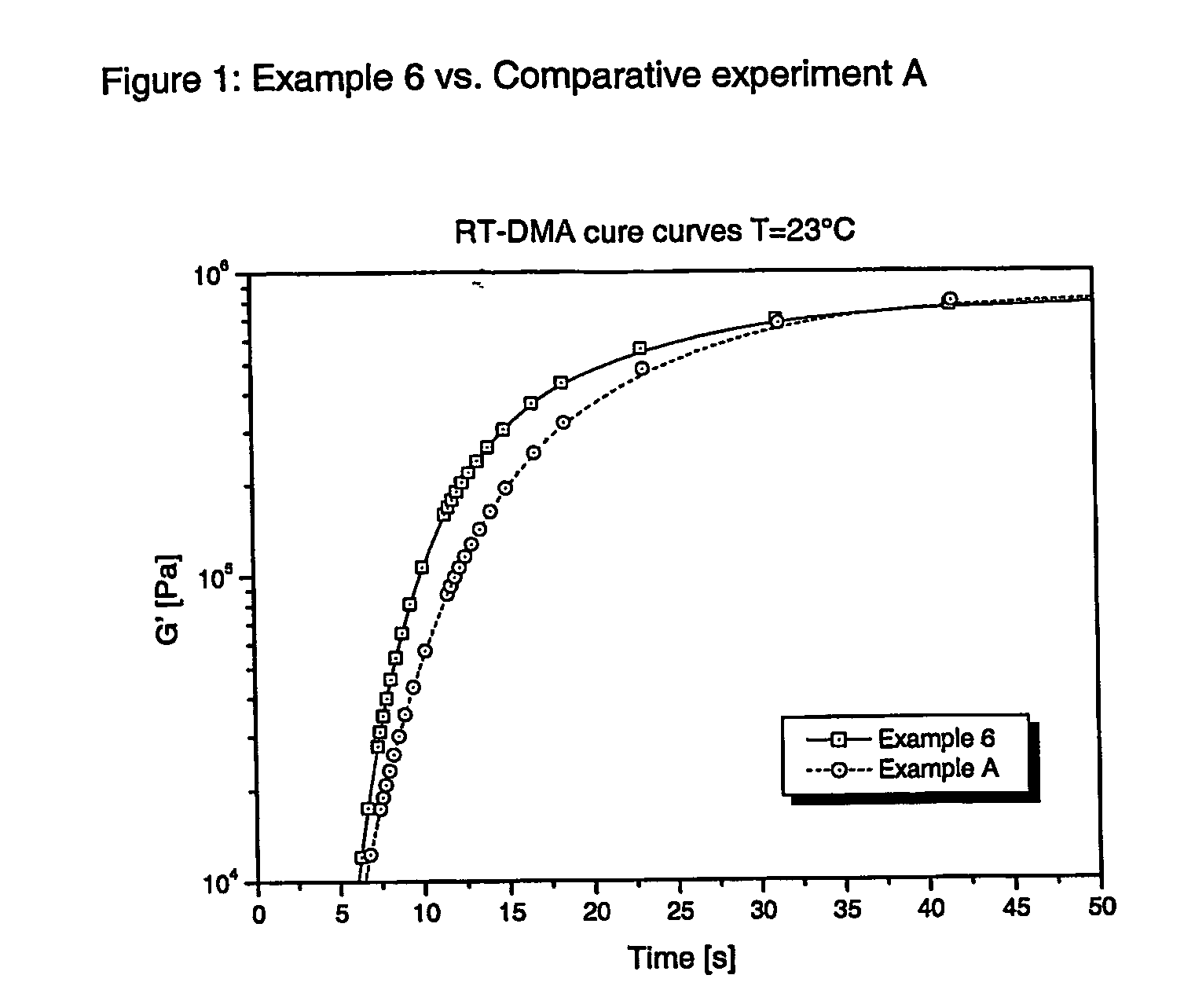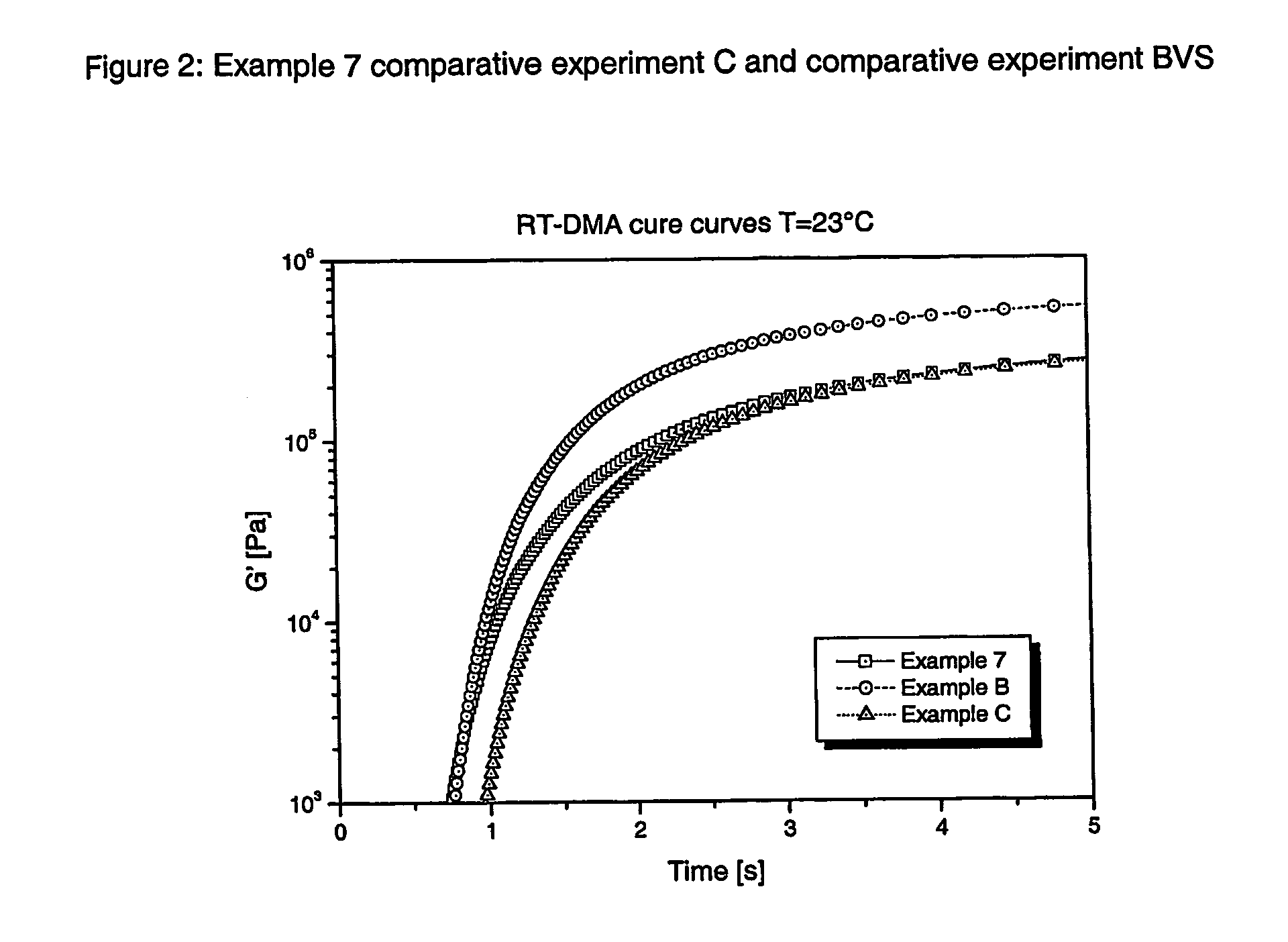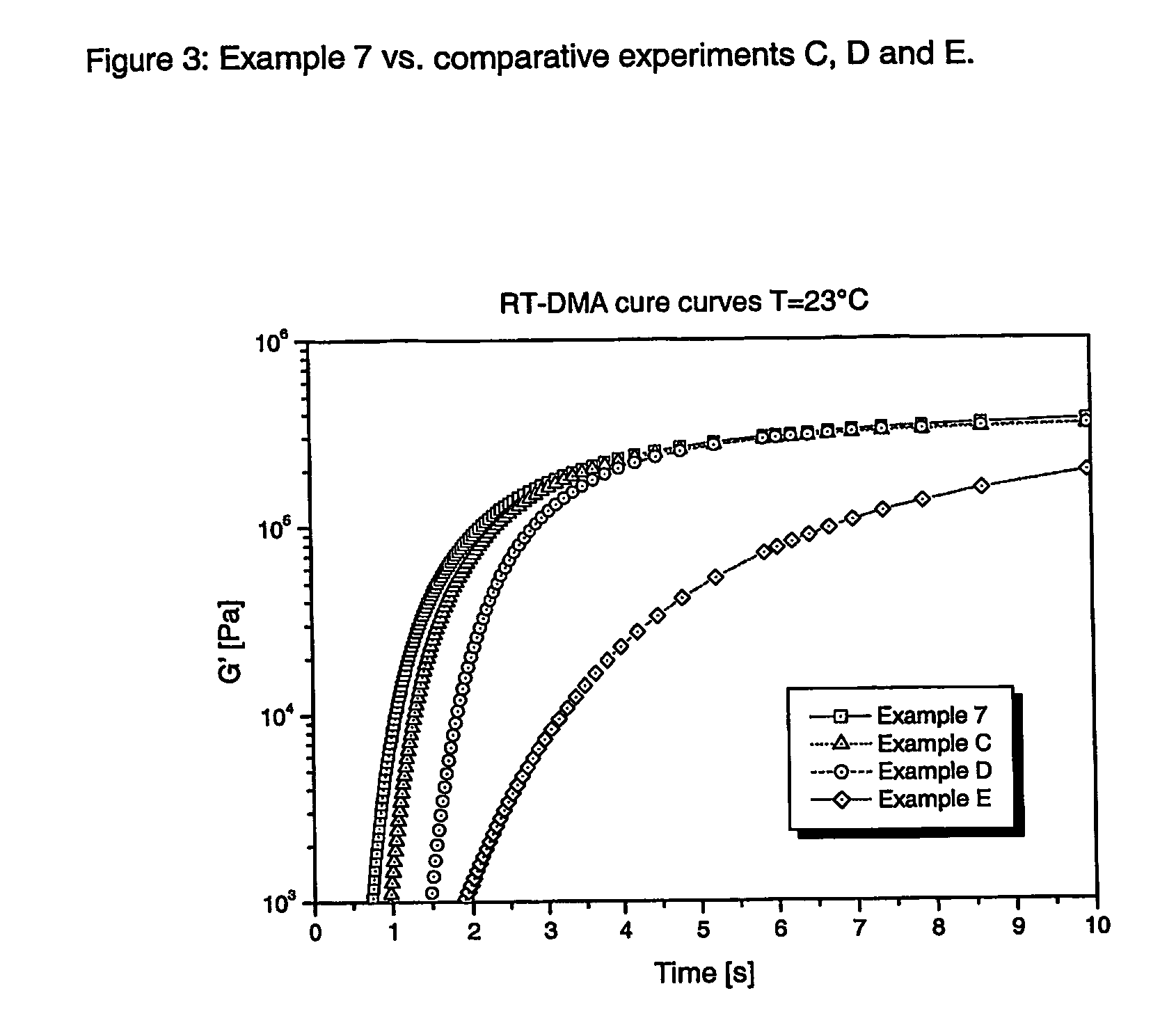Radiation curable thiol-ene composition
- Summary
- Abstract
- Description
- Claims
- Application Information
AI Technical Summary
Benefits of technology
Problems solved by technology
Method used
Image
Examples
example 1
Synthesis of a PTGL 2000 Urethane Dinorbornene Oligomer
[0117] An acrylate oligomer PTGL2000 urethane diacrylate (made from PTGL2000 diol, IPDI and HEA) 21.4 g (0.008 mol) was dissolved into 15 ml toluene and stirred at 40° C. under a nitrogen atmosphere in a 250 ml three-necked round-bottom flask equipped with an efficient condenser, a constant pressure addition funnel, and a thermometer. 1.56 g of freshly cracked cyclopentadiene monomer (0.024 mol, 3 equivalents) was added dropwise by addition funnel. The reaction temperature was then raised to 80° C. and stirred for about 16 hours (overnight). Finally, excess cyclopentadiene and dicyclopentadiene were removed under vacuum pressure (0.5-2 mbar, below 70° C.), to give a quantitative yield of a pale yellow resin. The reaction was followed by FT-IR and 1H NMR measurement using the spectroscopic peaks given below
[0118] FT-IR (neat, cm−1): 1722 (urethane carbonyl); 3061.1, 712 (double bond of norbornene)
[0119]1H NMR (CDCl3, ppm): 5.9...
example 2
Synthesis of PPG 2000 Urethane Dinorbornene Oligomer
[0121] Acrylate oligomer PPG2000 urethane diacrylate (made from PPG2000 diol, IPDI and HEA as described in U.S. Pat. No. 5,837,750) 21.4 g (0.008 mol) was dissolved into 10 ml toluene and stirred at 40° C. under a nitrogen atmosphere in a 250 ml three-necked round-bottom flask equipped with an efficient condenser, a constant pressure addition funnel, and a thermometer. Freshly cracked cyclopentadiene monomer 1.56 g (0.024 mol, 3 equivalents) was added dropwise by addition funnel, then the reaction temperature was raised to 80° C. and stirred for about 16 hours (overnight). Finally, excessive cyclopentadiene and dicyclopentadiene were removed under vacuum (0.5-2 mbar, below 70° C.), and a slightly yellow resin was yielded quantitatively. Analysis of the reaction mixture by FT-IR and 1H NMR measurement showed the conversion to be complete.
[0122] FT-IR (neat, cm−1): 1722(urethane carbonyl), 3061.1, 712 (double bond of norbornene)
[0...
example 3
Synthesis of PPG 4200 Urethane Dinorbornene Oligomer
[0125] The oligomer of Example 3 is prepared in the same way as for Example 2, except that PPG 4200 diol is used instead of PPG 2000 diol. The compound so obtained can be represented by the same chemical structure as given under Example 2, but wherein the backbone is PPG 4200, X is derived from IPDI and n equals 1. The compound has a theoretical number average molecular weight Mn of 5009 and will be further referred to by PPG4200-(IPDI-HEA-NB)2.
PUM
| Property | Measurement | Unit |
|---|---|---|
| Pressure | aaaaa | aaaaa |
| Molar mass | aaaaa | aaaaa |
| Structure | aaaaa | aaaaa |
Abstract
Description
Claims
Application Information
 Login to View More
Login to View More - R&D
- Intellectual Property
- Life Sciences
- Materials
- Tech Scout
- Unparalleled Data Quality
- Higher Quality Content
- 60% Fewer Hallucinations
Browse by: Latest US Patents, China's latest patents, Technical Efficacy Thesaurus, Application Domain, Technology Topic, Popular Technical Reports.
© 2025 PatSnap. All rights reserved.Legal|Privacy policy|Modern Slavery Act Transparency Statement|Sitemap|About US| Contact US: help@patsnap.com



